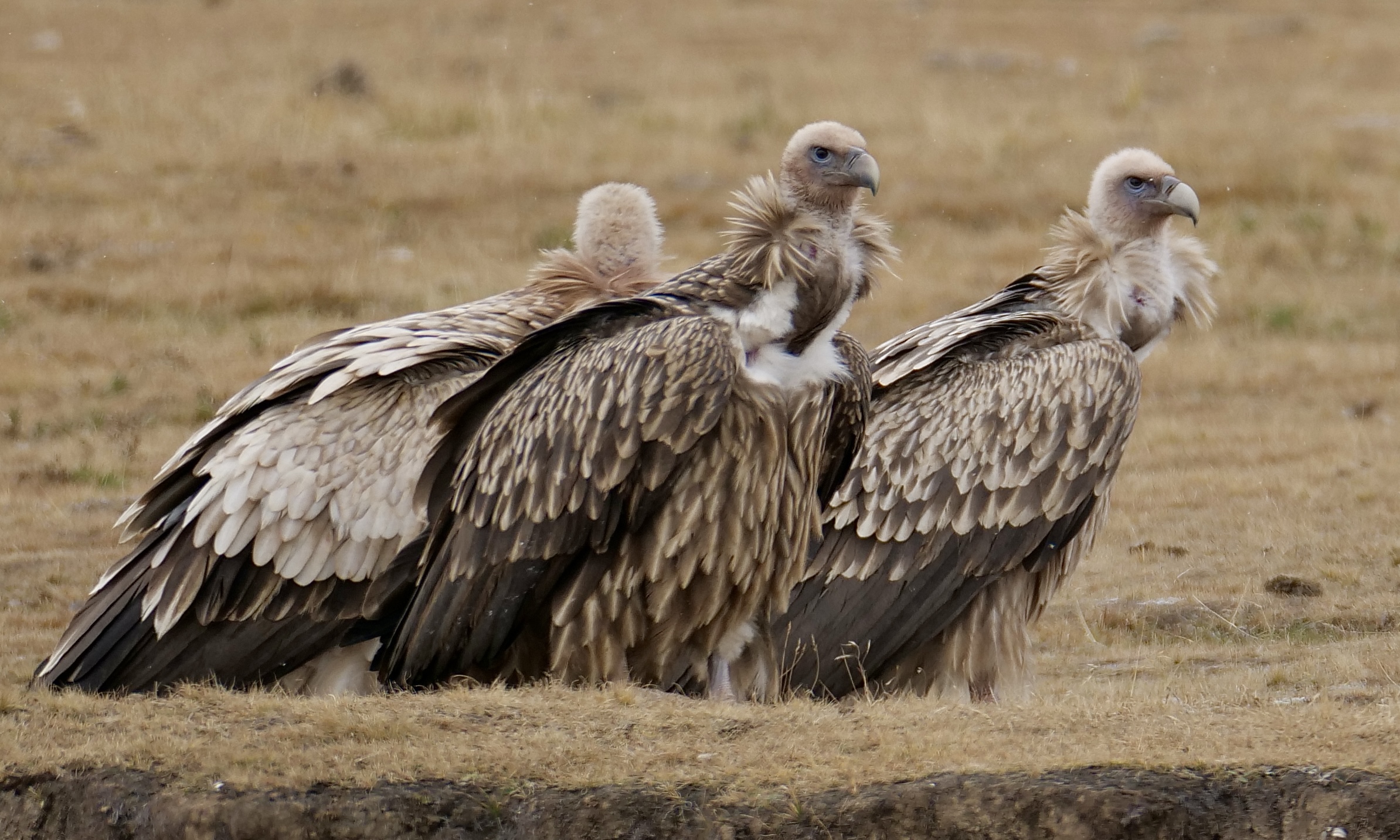Dead yaks reputedly provide rather more than half of the food eaten by Gyps himalayensis, but many members of Homo sapiens have also been devoured.
“Live” humans, fear not!
These very large raptors are scavengers, not hunters.
For countless human generations – via so-called “Tibetan Sky Burials”, in which religious rites are meticulously conducted, but the recently-deceased are not buried – Himalayan Griffon Vultures have done high-altitude humans a valuable service.
Snowflakes were lightly falling as I took the photo at 1 pm, on 10 October 2019.
We were on the eastern part of the Tibetan Plateau in Qinghai, China.
By Tibetan Plateau (and Himalayan Griffon Vulture) standards, the local altitude was low.
At a little less than 4,000 metres above sea level, we were some hundreds of metres shy of twice the height of Australia-proper’s most elevated point.
When someone/something dies under “Tibetan skies”, chances are excellent that prevailing local conditions make burial highly impracticable, or practically impossible.
Click here to discover more about the traditional alternative.
Click this to discover more about these very big, powerful, usually-monogamous birds.
On and around the Tibetan Plateau is their primary domain; there, they are not an uncommon sight, but their number is declining.
Himalayan Griffon Vultures’ IUCN conservation status is now “near threatened”.
